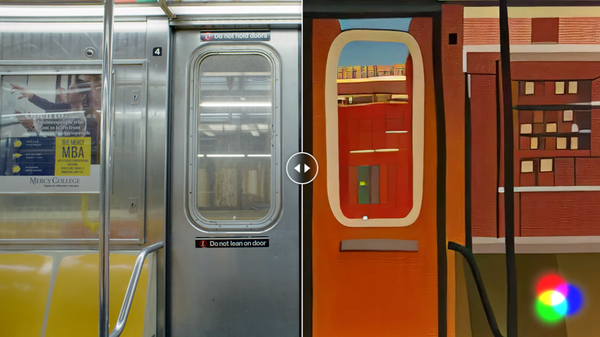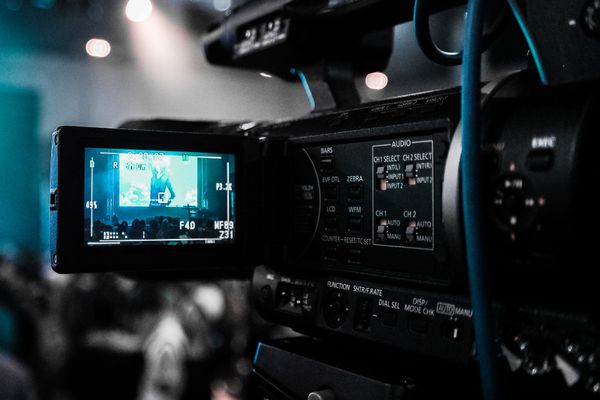It's easy to state that a higher number is better. It's also easy to get sucked into (albeit interesting) theories and at other times non-researched half-truths when debating film projection technology and frame rate. But there are very simple, very reasonable arguments for not only high frame rate movies, but the establishment of 60 fps as standard. Here they are.
60 fps videos are both smooth and sharp
The only reason you don't run out of movie theaters with heavy eye strain is the fact that film makers use motion blur to make the pictures look smoother than they actually are. Motion blur happens when I record your moving hand, and instead of recording a single moment in time (which would produce a sharp image of your hand), I capture a little more, so the final recorded picture includes a part of the blurred movement. And that, when combined into 24 images, makes it look quite a lot smoother.


Sounds great? Well, not so quick. Motion blur has a huge drawback. It comes at the expense of detail. Try focussing on stuff that moves on screen to get a sharp look: won't work. In fact, even with added motion blur, movies at 24 frames are still too choppy for fast, smooth camera pans – it only works for slow pans (heck why there's a 7 second rule for filmmakers – I shit you not).
If you now, like me, think you'd rather prefer sharp, detailed and smooth images without stupid film making limitations, you're in luck: At 60 fps, all these limitations go away. Motion blur is drastically reduced, movies are crystal sharp even with fast motion, and stupid rules don't exist anymore for film makers. Want to watch a cooking tutorial and follow the copping board? Want to watch the strobe lights in a recored concert? How about debris falling around in an explosion? With 60 fps, you can.
60 fps is the only format that syncs with all of your screens
Every device you own that has a screen, with the exception of TVs, has a fixed refresh rate of 60 Hz (with the exception of some gaming monitors). That includes your tablets, cellphones, computer screens. Basically everything you watch YouTube on.
What does it mean? It means that your screen constantly draws a new image at 1/60 of a second, regardless of what you feed him. If you're a close observer, you notice that 60 doesn't evenly divide by 24. That's a pretty significant problem, as running a movie with 24 fps on a 60 Hz screen will cause the screen to draw a few frames twice, in an irregular way that is extremely noticeable. A camera pan that was smooth in a movie theater will thus look super choppy on your screen.

You can fix this problem in two ways: You either replace all of your screens with more intelligent ones that can adapt their refresh rate, like TVs do (good luck with that, except for some gaming monitors you're out of luck), or you urge people to produce content made for, well, every screen their content is consumed on. As it turns out, the only two formats that qualify are 30 fps and 60 fps (not 29.97 and 59.94, those two are shit and remnants of NTSC). 30 fps isn't much smoother than 24, so make it 60. 60 fps on 60 Hz screens is a combination made in heaven.
60 fps greatly reduces LCD motion blur
Ever heard someone bitch about LCD screens, saying they're crap because they're so blurry? Well, it's partially true. Good old CRT TVs, to this date, produce the sharpest home entertainment image. But there's an important detail: The screen isn't blurry, it only looks blurry. The blur happens in your eye, and it's because of persistent LCD frames in combination with – you guessed it – low frame rates. Read all about it here.
4K looks better at 60 fps
A lot of producers have been asking me about compatibility between 4K / Ultra HD content and high frame rates. In fact, those two are not only compatible, but highly recommended together. 4K movies at regular 24 fps produce ultra detailed imagery, vastly superior to 1080p on large screens – as long as they don't move, that is. Due to the heavy amount of motion blur in moving scenes at low frame rates, you immediately loose the gained resolution detail. At 60 fps, that motion blur problem is largely eliminated, and 4K will look like it's supposed to look – extremely sharp and full of detail.
60 fps makes you part of the scene
Covering all of its technological advantages, we're now down to the look of HFR movies. Many people have been unhappy with the look of Peter Jackson's Hobbit, the first commercial HFR movie trilogy. By a large part, the reason is simple conditioning, but there's another important part at play: Cineasts complained that the movies felt too real, thus making them part of the New Zealand set, as opposed to part of the current scene. And it's true – while I have tremendous respect for Peter Jackson and his fearless push into the future, The Hobbit might not have been the best use-case. At least until we develop better ways of reestablishing the dream-like quality of 24p-motion-blurry movies with higher frame rates.
But for now, where does being part of the scene become a huge advantage? How about
- Tutorials, documentaries and variety shows (i.e. cooking, fashion, make up)
- Crime dramas (hey, you're suddenly part of the crime scene!)
- Concerts (you want to be there!)
- Everything happing in real life
And that's a wrap! If you'd like to go deeper and learn more about frame rates, motion blur and display technology, read The Illusion of Motion, and why Frame Rate Is Really A Creative Choice. Now enjoy a few HFR demo videos:






